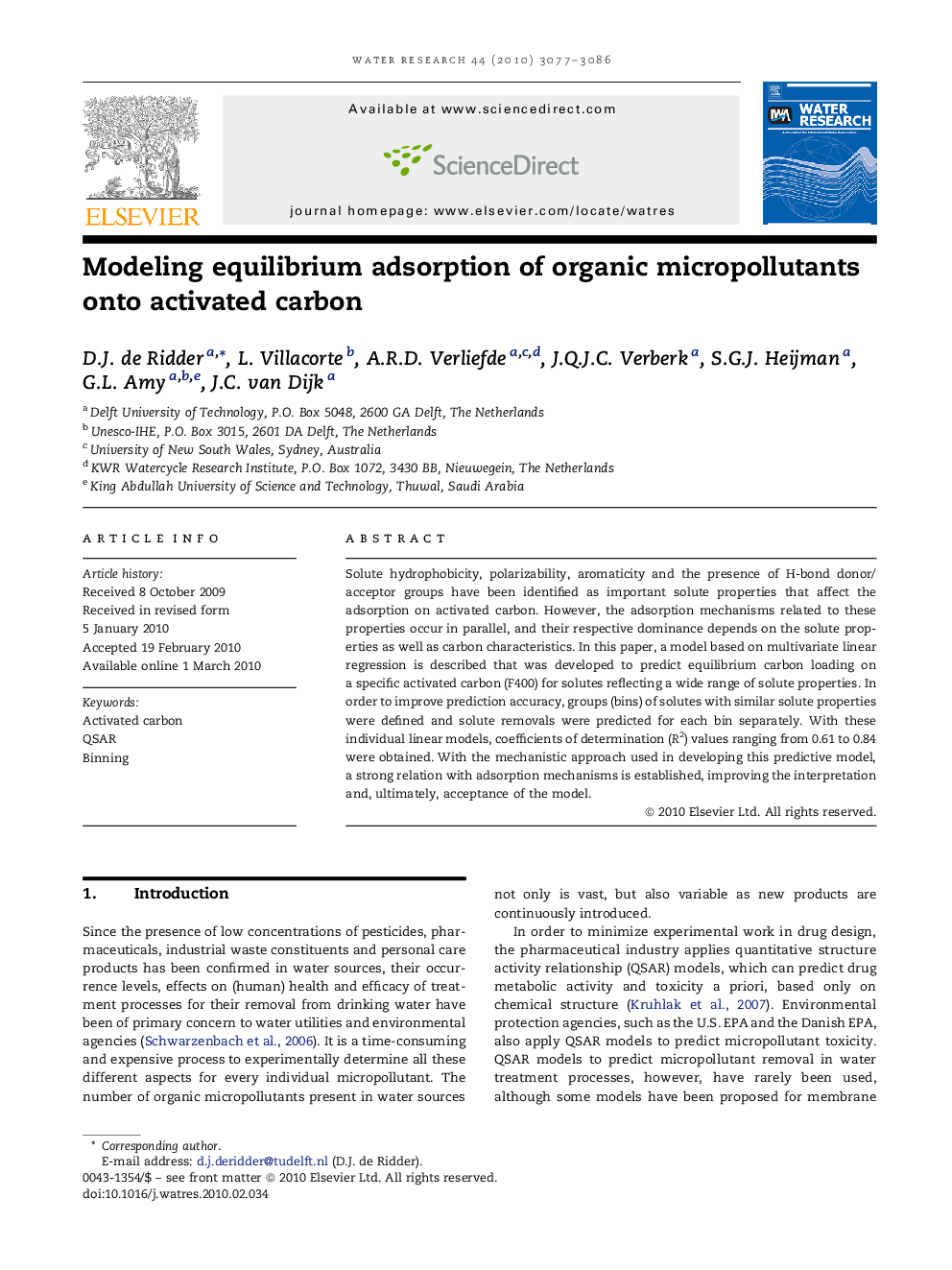| Article ID | Journal | Published Year | Pages | File Type |
|---|---|---|---|---|
| 4485080 | Water Research | 2010 | 10 Pages |
Solute hydrophobicity, polarizability, aromaticity and the presence of H-bond donor/acceptor groups have been identified as important solute properties that affect the adsorption on activated carbon. However, the adsorption mechanisms related to these properties occur in parallel, and their respective dominance depends on the solute properties as well as carbon characteristics. In this paper, a model based on multivariate linear regression is described that was developed to predict equilibrium carbon loading on a specific activated carbon (F400) for solutes reflecting a wide range of solute properties. In order to improve prediction accuracy, groups (bins) of solutes with similar solute properties were defined and solute removals were predicted for each bin separately. With these individual linear models, coefficients of determination (R2) values ranging from 0.61 to 0.84 were obtained. With the mechanistic approach used in developing this predictive model, a strong relation with adsorption mechanisms is established, improving the interpretation and, ultimately, acceptance of the model.
